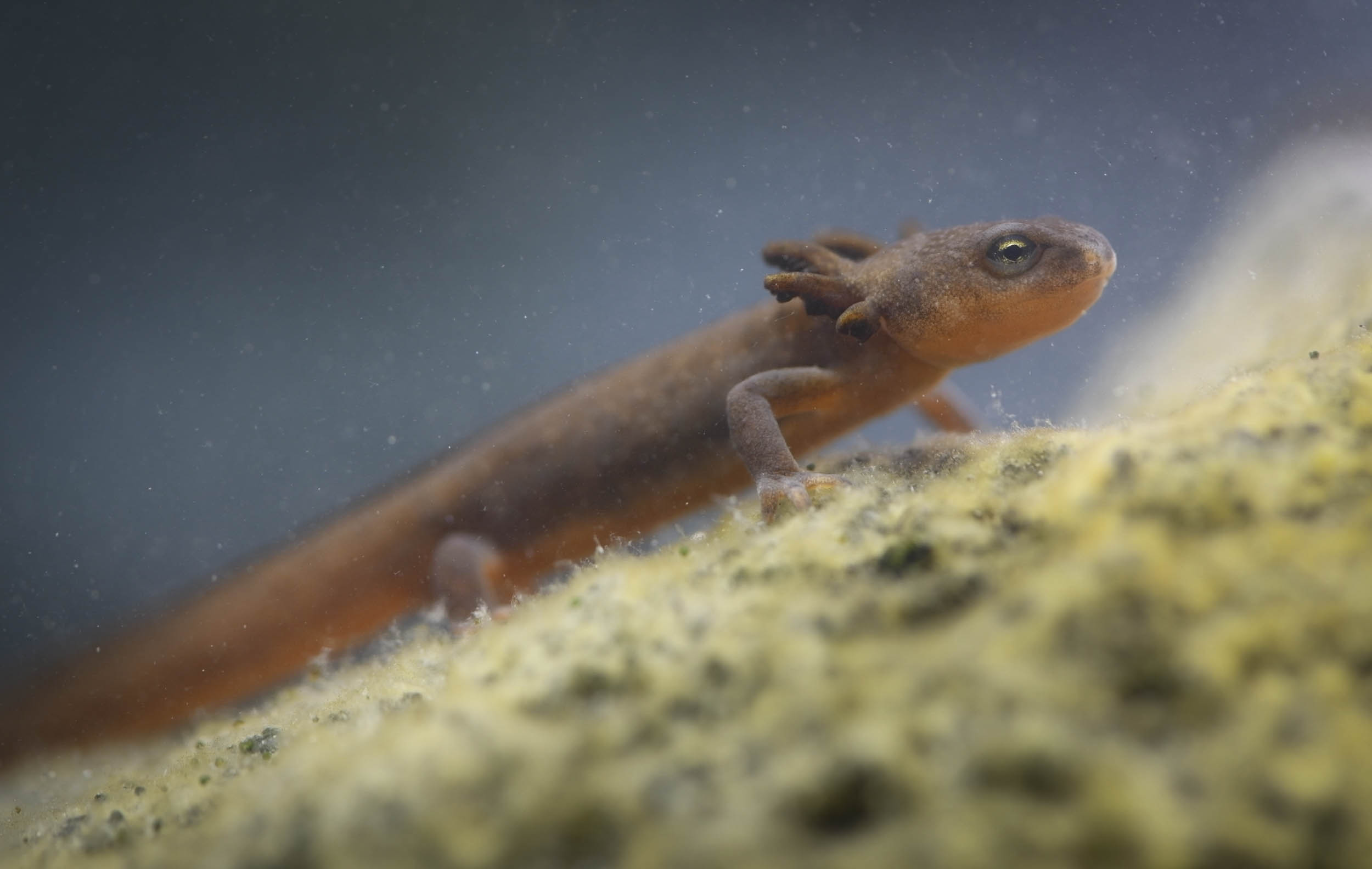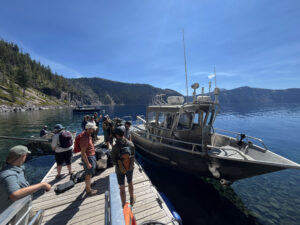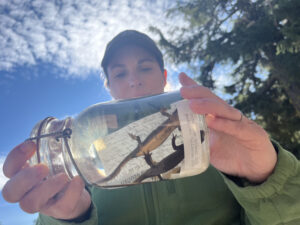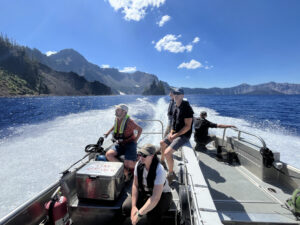Saving the Mazama newt
How an unprecedented partnership is working to understand and protect a unique Oregon species
Along the rocky shore of Crater Lake in Oregon, a small amphibian thousands of years ago somehow made its way down the steep slope and into the cold, impressively clear water of what would become one of the nation’s original national parks.
In that moment, this lizard-shaped creature — a newt, which is a type of salamander — instantly became the apex aquatic predator in the newly formed lake. There, it evolved undisturbed for millennia and would become an ambassador for Oregon’s only national park.
The Mazama newt, named for the volcano whose explosion and collapse about 7,700 years ago formed Crater Lake, is genetically distinct from its more widespread rough-skinned newt relatives. For instance, while nearby rough-skinned newts are renowned for the powerful toxin in their skin that protects them from predators, the Mazama newt exhibits less of that trait.
Though much about the Mazama newt remains a mystery, biologists are increasingly concerned about the species’ future. The rapid spread of invasive crayfish in Crater Lake poses an imminent extinction threat.
In a landmark conservation effort, the imperiled and adorable Mazama newt has found a new home beyond its native Crater Lake, with 19 of these rare amphibians now residing at the High Desert Museum. This partnership between the Museum, National Park Service and Oregon Zoo marks a critical step in understanding and protecting one of Oregon’s most unique species, potentially pulling these charismatic creatures back from the brink of extinction.
The crayfish problem
While little is known about the characteristics and behaviors of these unique residents of Crater Lake, biologists are alarmed by what the threat of an invasive crayfish may mean for its survival.
What we do know is that today they’re on the verge of disappearing. Signal crayfish, introduced to Crater Lake in the early 1900s as a food source for stocked trout, pose a dual threat to Mazama newts. According to Park biologists, crayfish can both prey on the newts and devastate the populations of small invertebrates that the newts rely on for food. In areas where crayfish have spread, few other aquatic species survive.
In August 2024, park biologists snorkeled the lake’s frigid shoreline to collect a small number of Mazama newts, transferring them to the High Desert Museum. There, staff are developing care protocols for this species, which has never before been cared for outside its natural habitat. This partnership, coordinated by the Oregon Zoo, marks a pivotal first step in shaping a conservation action plan.
“There are only a few places left in the lake where we can reliably find Mazama newts, because once crayfish invade an area, the newts vanish,” said Crater Lake National Park aquatic ecologist Dave Hering. “The ones we collected were thin and in poor health, indicating that crayfish predation is pushing the remaining population to its breaking point.”
The lake’s depth and size make eradicating crayfish a daunting challenge but vital for the survival of both the Mazama newt and the entire aquatic ecosystem.
Mazama newt care
Meanwhile, the 19 newts at the High Desert Museum are thriving under the dedicated care of wildlife staff, who monitor water quality and diet, test for disease and track individuals by both tags and their unique underbelly markings. Some of the newts are on display, raising awareness of the species among the Museum’s thousands of annual visitors.
“This is the first time Mazama newts have been kept in aquaria, so what we learn at the Museum could guide future conservation efforts, such as breeding programs,” said High Desert Museum curator of wildlife Jon Nelson. “The newts are active, healthy, and thriving—they’re doing everything we hoped they would. We’re optimistic that, over time, they’ll provide valuable insights to help protect their species.”
The Mazama newt’s survival depends on two critical strategies: establishing a safeguard population outside Crater Lake National Park and eliminating the invasive crayfish that threaten their existence. A comprehensive recovery effort addressing both challenges is essential to prevent the species’ extinction.
One way people can help is to avoid releasing animals into environments where they don’t naturally belong. Oregon faces one of its most pressing ecological challenges as invasive aquatic species threaten the delicate balance of its freshwater ecosystems. From crayfish to bullfrogs and carp, these invaders wreak havoc on native species and habitats, threatening biodiversity and water quality across the state.
Watch the video!
Experience first-hand the efforts of biologists and wildlife experts as they dive into the cold waters of Crater Lake, looking for Mazama newts.








